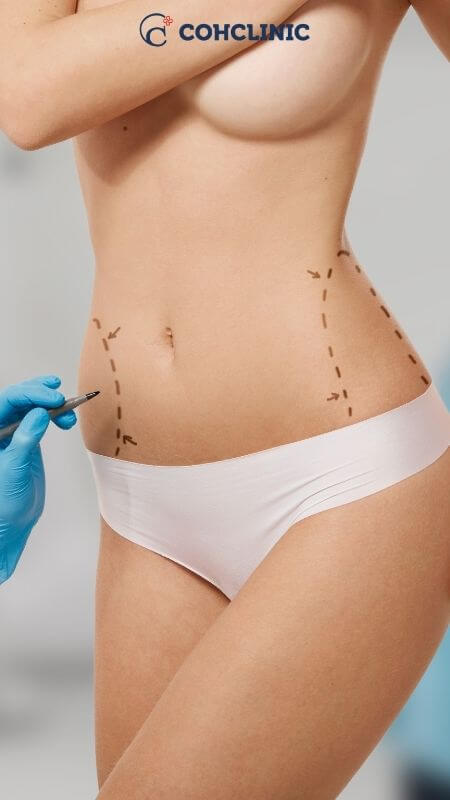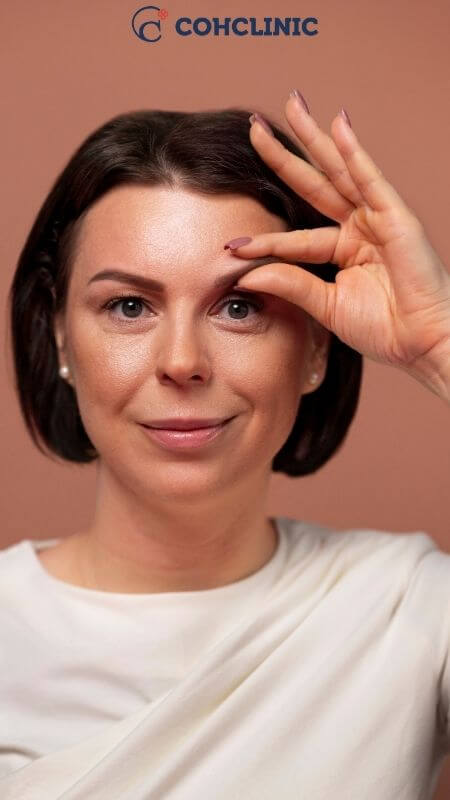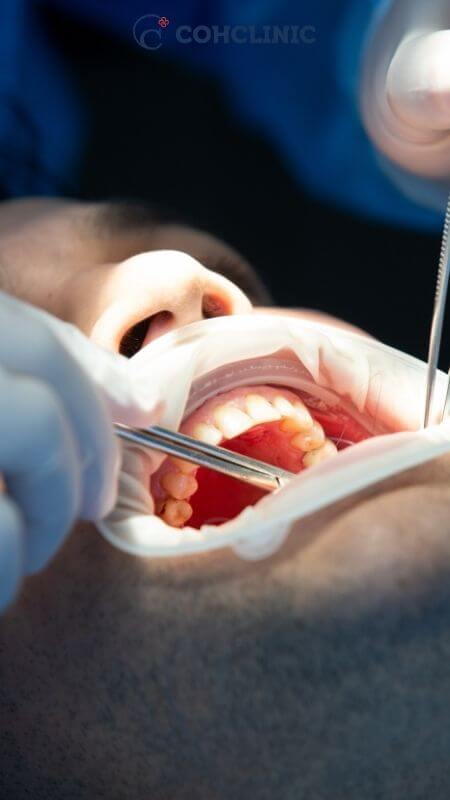Complex rhinoplasty refers to a surgical procedure that involves the reshaping or reconstruction of the nose to correct aesthetic or functional issues that are more challenging than those addressed in a primer rhinoplasty. Complex rhinoplasty nose surgery may require more advanced techniques and expertise due to the complexity of the nasal deformity or the patient’s specific needs.
What is a complex rhinoplasty?
Complex rhinoplasty refers to a surgical procedure that involves extensive reconstruction of the nose due to deformities caused by previous surgeries, trauma, or congenital abnormalities. This form of rhinoplasty is more difficult and necessitates a high level of surgical skill and competence.
The procedure involves a combination of different techniques, including cartilage grafting, bone reshaping, and tissue rearrangement, to achieve the desired results. The goal of complex rhinoplasty is to restore the function and aesthetics of the nose while maintaining its natural appearance.

Complex rhinoplasty may be necessary in cases where the patient has a severely deviated septum, collapsed nasal valves, or significant scarring from previous surgeries. Patients with congenital defects, such as cleft lip and palate, may also require treatment.
Complex rhinoplasty, like any operation, contains hazards like hemorrhage, infection, and anesthetic responses. Patients should discuss the benefits and hazards of the proposed course of therapy with their surgeon before deciding.
Who is a good candidate for complex rhinoplasty?
Here are some situations where a rhinoplasty may be considered complex:
- Structural abnormalities: Significant structural defects, such as a significantly deviated septum, collapsed nasal valves, or a twisted or asymmetrical nose, may necessitate complex rhinoplasty. These issues may affect the overall function and appearance of the nose, requiring more extensive surgical intervention.
- Revision rhinoplasty: When a patient has previously undergone one or more unsuccessful rhinoplasty procedures, the subsequent surgery to correct the issues is often more challenging. Revision rhinoplasty involves addressing scar tissue, weakened nasal structures, or asymmetries caused by previous surgeries.
- Post-traumatic deformities: If it has been extensively broken or damaged by trauma, could be required to do a sophisticated rhinoplasty to restore the nose’s function and appearance. The surgeon may need to rebuild damaged structures, correct fractures, or improve breathing difficulties resulting from the trauma.
- Congenital abnormalities: Some people are born with congenital nasal deformities, such as cleft lip and palate or nasal malformations. Correcting these complex issues often requires a comprehensive approach involving multiple surgical techniques to achieve optimal results.
- Ethnic considerations: People from different ethnic backgrounds may have specific nasal characteristics that require specialized techniques. Complex rhinoplasty in such cases involves maintaining the patient’s ethnic identity while addressing their desired aesthetic changes or functional concerns.
Complex Rhinoplasty vs. Rhinoplasty
Complex rhinoplasty and rhinoplasty are both surgical procedures that involve reshaping or reconstructing the nose. But they differ in the level of complexity and the specific issues they address.
Rhinoplasty, also known as a “nose job,” is a common cosmetic procedure that focuses primarily on improving the aesthetic appearance of the nose. It is performed to enhance the nose’s shape, size, symmetry, or overall proportion of the other facial features. Rhinoplasty can correct issues including a hump on the nose’s bridge, a bulbous or drooping tip, large nostrils, or nasal asymmetries. A standard rhinoplasty might involve practical changes like straightening a slightly deviated septum or enhancing nose breathing, but the main goal is to provide a pleasing cosmetic result.
On the other hand, complex rhinoplasty is necessary when nasal deformities or functional problems are more difficult or sophisticated and go beyond the objectives of a primer rhinoplasty. Complex rhinoplasty may involve addressing structural abnormalities, such as a severely deviated septum, collapsed nasal valves, twisted or asymmetrical nasal shape, or important nasal trauma. It may also be necessary in cases where previous rhinoplasty procedures have been unsuccessful and revision surgery is needed to correct the resulting issues. Furthermore, complex rhinoplasty can include reconstructive techniques to address congenital abnormalities or to preserve the patient’s ethnic identity while achieving desired aesthetic changes.
The complexity of a rhinoplasty case determines the level of surgical intervention required and the expertise of the plastic surgeon performing the procedure. Complex rhinoplasty demands a deep understanding of nasal anatomy, advanced surgical techniques, and a comprehensive approach to achieve both functional improvements and natural-looking aesthetic results. It often requires meticulous planning, precise execution, and specialized expertise.
Complex Rhinoplasty vs. Primary
Revision rhinoplasty and primary rhinoplasty are two different procedures related to nose surgery. Here’s an explanation of each:
Primary Rhinoplasty
This refers to a patient’s initial nose surgery. It is possible to do it for both aesthetic and practical reasons. Primary rhinoplasty seeks to enhance the look and/or functioning of the nose by altering the nasal anatomy. It involves making incisions, manipulating the bone and cartilage, and repositioning or removing tissues to achieve the desired aesthetic or functional outcome.
Revision Rhinoplasty
This procedure is performed when a patient undergoes a secondary or revision surgery after having a primary rhinoplasty. Typically, surgeons perform revision rhinoplasty to address unsatisfactory results from the initial surgery or to correct any complications that may have arisen. It is usually more complex than primary rhinoplasty because it involves working with altered anatomy and scar tissue from the previous surgery. The goals of revision rhinoplasty are to correct any functional or cosmetic issues, improve the patient’s satisfaction, and achieve the desired outcome.
Note that revision rhinoplasty often poses greater difficulty due to changes in nasal architecture and the presence of scar tissue. To get the desired results, surgeons may need to apply sophisticated procedures and approaches. It is crucial for patients considering revision rhinoplasty to consult with a highly skilled and experienced plastic surgeon who specializes in revision cases.
Ultimately, whether a patient requires a primary or revision rhinoplasty depends on their individual circumstances. Primary rhinoplasty is for those who have not undergone any prior nose surgery, while revision rhinoplasty is for individuals seeking corrective measures after an unsatisfactory primary rhinoplasty or addressing complications.
Is a Revision Rhinoplasty Risky?
During any rhinoplasty surgery, blood flow is extremely vital, and your surgeon must be particularly cautious not to compromise or sever critical vessels in the nose area. After the first surgery, the material within the nose becomes more challenging to work with because hard, scar tissue typically develops.
Due to these considerations, it may be necessary to prolong the time under general anesthesia. And also your operation’s cost may be more expensive.
The edema from the initial rhinoplasty treatment could remain for as least a year. Therefore patients are typically recommended to wait for at least that long before arranging a second procedure. In most situations, this demands a significant deal of patience, but it will assist in limiting dangers and ensure optimal recovery.
How to choose the best clinic for complex rhinoplasty?
Discover the difference with COH Clinic. Trust your complex rhinoplasty procedure with our skilled and experienced plastic surgeon, a specialist in nasal surgery. Our team will meticulously assess your unique case, devising a personalized surgical plan to tackle intricate challenges and attain the results you desire, all while prioritizing functional enhancements and a natural appearance. Take the first step today by reaching out to us at +90 (536) 934 6524. Let COH Clinic assist you in resolving your nasal concerns effectively.
Frequently Asked Questions
What is the most complex rhinoplasty?
What is the most complex rhinoplasty?
Revision rhinoplasty is a technique used to repair rhinoplasty issues following a previous operation. This technique is significantly tougher than the first. Working within the nose is particularly difficult due to scar tissue and weaker internal structures.
Is revision rhinoplasty more difficult?
Is revision rhinoplasty more difficult?
Due to scar tissue, lost nose strength, and some unpredictability, revision rhinoplasty is more challenging. Scar tissues form as a result of the initial surgery healing process.
Can revision rhinoplasty go wrong?
Can revision rhinoplasty go wrong?
Of course, if you are not operated on by skilled and safe hands, the surgery might go wrong. However, no rhinoplasty surgery outcome can be 100% flawless because surgeons are not robots, and the patient's anatomy also has a significant impact on the results.
How many nose revisions can you have?
How many nose revisions can you have?
How many revision rhinoplasty procedures a person can have isn't capped at a certain amount. You can only really take so much at a time, though. Each additional nose surgery has its own set of problems.
Why do so many people get revision rhinoplasty?
Why do so many people get revision rhinoplasty?
The first rhinoplasty is one of the most intricate cosmetic operations, which is why secondary treatments are so popular. The danger of executing substandard procedures with undesirable results exists for surgeons who lack the necessary expertise and training to carry out this treatment appropriately.
Is revision rhinoplasty easier recovery?
Is revision rhinoplasty easier recovery?
Revision rhinoplasty often requires a lengthier recovery period than primary rhinoplasty. The patient can undergo extra swelling and bruising and require repeated revision operations in order to get the desired outcome.
Is revision rhinoplasty more expensive?
Is revision rhinoplasty more expensive?
Revision rhinoplasty costs more than primer rhinoplasty because a revision rhinoplasty requires a lot more work than a primary rhinoplasty does. Due to dissection through scar tissue, revision rhinoplasty nearly invariably necessitates a more challenging nose preparation.







